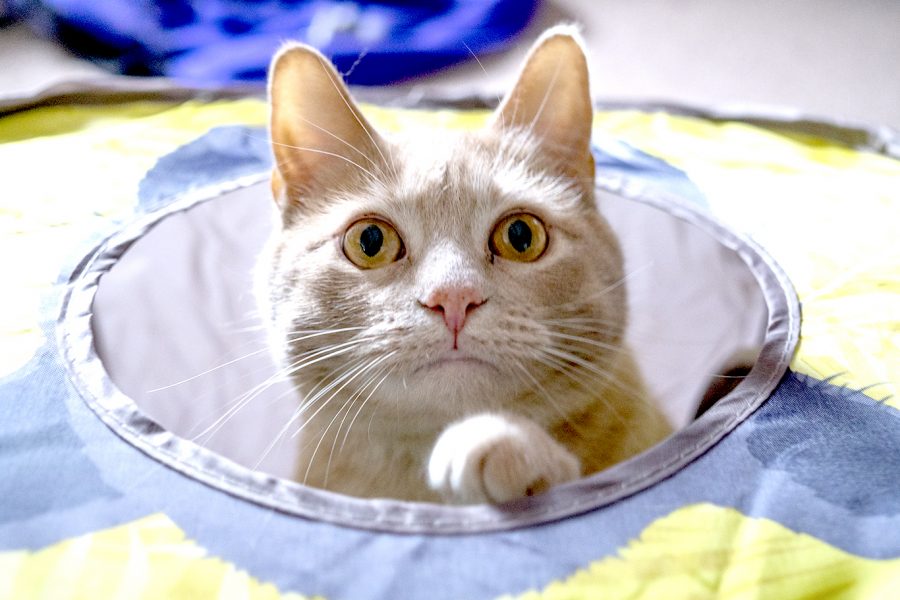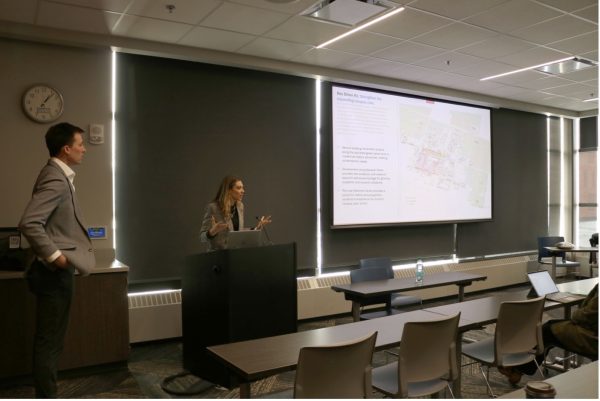Professional veterinary medicine program unifies SDSU and UMN
February 27, 2020
Students of South Dakota State University’s Department of Veterinary and Biomedical Science have reason to celebrate.
The University of Minnesota College of Veterinary Medicine has joined forces with SDSU to offer a new collaborative program for veterinary students beginning in 2021.
Previously, SDSU offered a four-year undergraduate program in pre-veterinary medicine to prepare students to attend an out-of-state veterinary school.
Now, SDSU is offering a Professional Program of Veterinary Medicine to provide a way to keep our veterinary students in the state of South Dakota for longer, creating a clear and local path through SDSU.
“There’s always been a huge interest in veterinary medicine, especially at an agricultural school,” Dr. Gary Gackstetter, director of the Professional DVM Program of Veterinary Medicine at SDSU, said. “But now, we’ve taken it another level, so we’ve moved the first two years of vet school into this institution. It’s saving you time, and it’s saving you money.”
The two universities are calling the format of the new program “2+2.”
This means that, after completing a four-year degree, students in the collaborative program would complete the first two years of veterinary school in the SDSU Department of Veterinary and Biomedical Sciences and the final two years at the University of Minnesota College of Veterinary Medicine.
The University of Minnesota Veterinary College leadership first met with SDSU about creating a collaborative program in 2014.
“We knew we had strong chemistry, strong physics, strong biology and so if we can take that up one more level, we could do some of the things that you could do at veterinary school. So why wouldn’t you just build a veterinary school? Hugely expensive.” Gackstetter said.
SDSU saw the benefit of partnering with an already established institution instead of taking on the cost of building its own veterinary school. The program was officially approved by the South Dakota Veterinary Medicine Association in August of 2018.
“So it would make sense to partner with a school that’s well-established and does a really good job at the clinical side as well. And I’ll be darned, the University of Minnesota is the perfect place,” Gackstetter said.
The 2+2 program would be beneficial to both state communities and help meet the current demand for veterinarians in both South Dakota and Minnesota.
South Dakota is one of 23 states without an accredited veterinary school, so the demand for the program is definitely present.
According to the information provided by the Animal Disease Research Department, as of September 2018, the South Dakota Veterinary Medicine Association listed 16 jobs for vets in the state and the American Veterinary Medicine Association listed 51 vacancies in the veterinary profession in South Dakota, North Dakota and Minnesota.
The University of Minnesota sees especially great benefits in the students coming from the agricultural backgrounds of South Dakota.
“We recognized that the people who come from a ranch or a farm and grew up in that environment…will likely return to that environment and that would help everybody,” Gackstetter said.
Other benefits of the program include reducing overall costs by nearly $100,000 for as many as 80 veterinary students each year when compared to tuition costs of traditional out-of-state accredited institutions, as well as providing an option for students closer to home.
The brand new Animal Disease Research & Diagnostic Laboratory of Veterinary and Biomedical Sciences is currently preparing for its first class of students in the Professional Program of Veterinary Medicine coming in Sept. 15, 2020.
“So we begin that application process probably this May, somewhere in there. We’ll close that application in September, and we would start in Fall 2021,” Gackstetter said.
Dr. Gacksetter has said he is excited for the new additions to the state-of-the-art facility.
“In the meantime, we’re doing all of these cool renovations over here. I can’t even show you because it’s not ready yet. That should be done probably mid to late summer we hope. So brand new anatomy lab, new research labs, brand new classrooms all being built as we speak right now,” Gackstetter said.




















